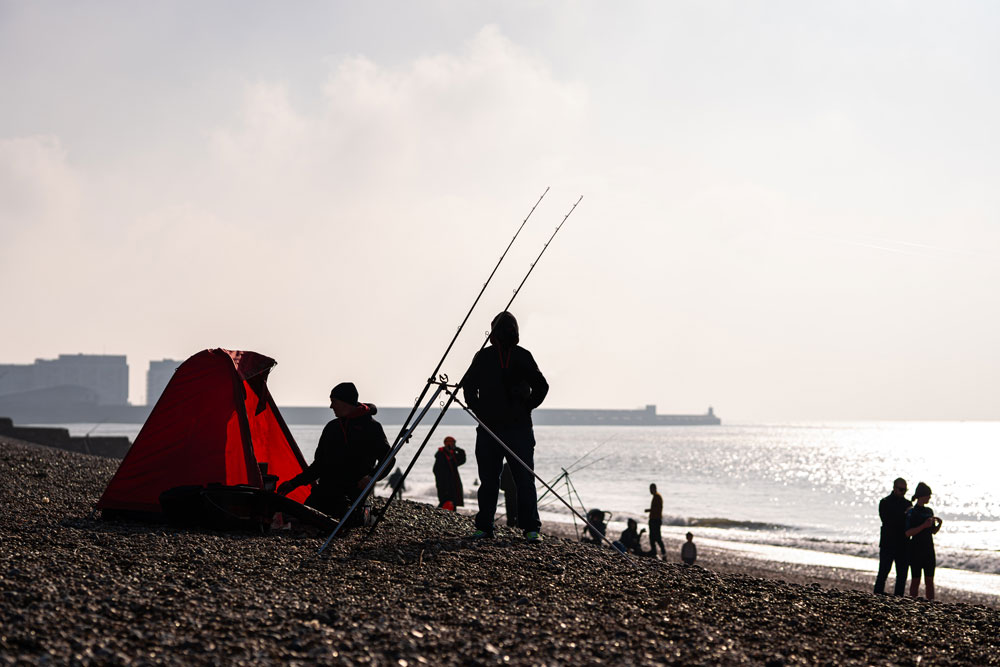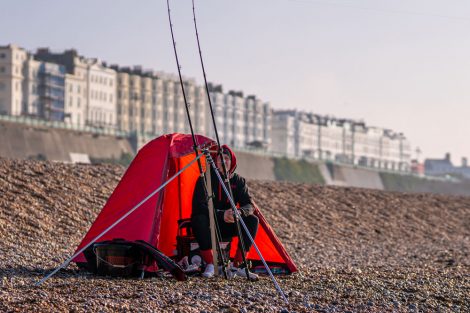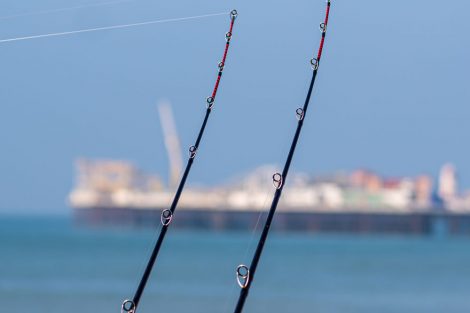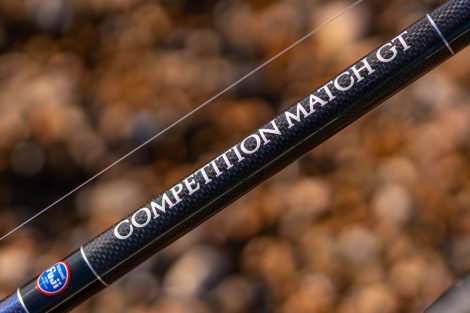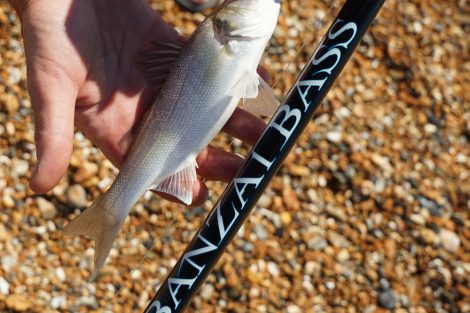Some shore anglers shy away from fishing two rods side by side as it’s hard work, which it can be when bites are prolific. Using two rods as a team is a major tactic with many advantages. Plus, it’s the fastest way to compile information that directly contributes to making that specific trip more successful.
Ideally, the two rods, be they conventional 12 to 14ft beachcasters or 13ft to 15ft continental style rods, need to be identical models (view the full range of Tronixpro rods here). Being the same means they will react similarly to the same wave patterns and wind gusts if cast to the same distance. If they both react similarly to the natural elements, if one suddenly reacts differently when viewed side by side, it indicates something else is happening. This might be weed on the line, or it might well be a bite. In short, two rod tips of identical build fished side by side are one of the best bite indicators you can have.
The obvious asset when fishing two rods is that you can cast one to maximum range and the other to medium range. This quickly establishes the feeding band the fish are feeding in, and you can then adjust casting distances to intercept fish with both rods. The other side to this is to fish one at long range, say targeting rays, but fish the other within 40-yards of the shore for flounder, coalfish and other species that work very close in. This sees all bases covered and gives you the best chance of catching consistently throughout the session.
Fishing two also offer the option of fishing two different rigs. This is usually a single or pennel hook rig targeting bigger species such as rays, bass and cod, with the other armed with a 2 or 3-hook rig for general species. Again, it’s a way of making the most of the opportunities catching smaller species for fun, but still leaving you in with a chance of a much bigger fish. It’s a simple logical equation of maximising your time. Fishing just one rod takes away one of those chances.
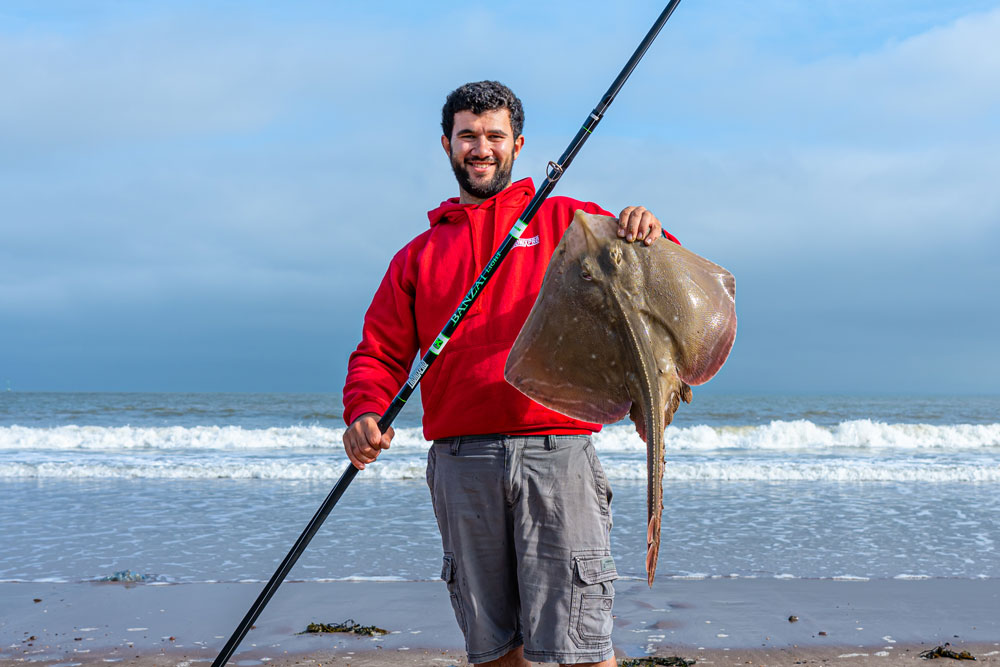
Both rods can also be fished with two different baits or different combination baits. A fish bait for rays and huss, and maybe a worm or crab bait for cod and bass. You’ll also notice when fishing like this that one bait or a combo bait will get most of the bites on the day. It’s then easy to switch both rods onto the same bait to maximise your catches and target a specific species.
Feeding periods during the tide may be within a short time window. If you fish two rods, it means you have a bait in the water all the time. Get a fish on one rod, and the other still works for you while you sort the fish out and rebait. It means you don’t waste any time or an opportunity while the fish are feeding.
Two rods also allow you to play the percentage game in your favour. Say you want to target sole or plaice, but the majority of a typical catch from that mark are flounders, then fishing both rods with a 3-hook rig on means straight away you have doubled your chances over somebody fishing with one rod. Stating the obvious, the more hooks you have in the water, the better your chances of success.
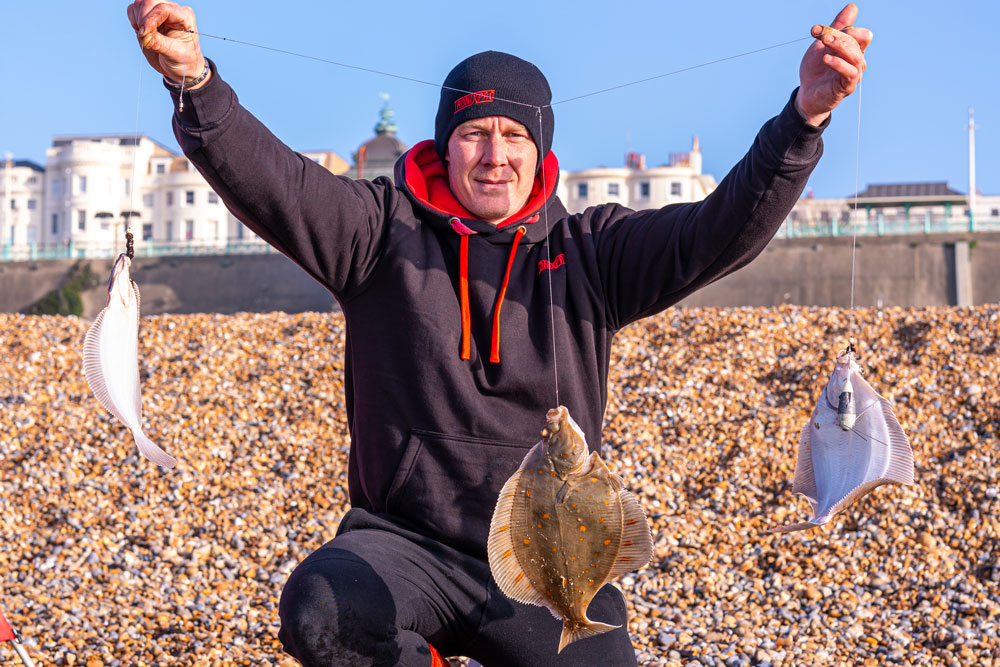
Experienced anglers utilise two rods cast to the same general range to increase the scent trail and attraction in the water. This works well when targeting rays over sand, huss and conger in rough ground, as well as tope, bass and cod that may be feeding as lone fish. The stronger the scent trail is, the more chance you have of a fish following it up.
Some anglers prefer to use a lighter bass rod alongside a full power beachcaster. Yes, the rods are completely different, but you can fish the beachcaster as normal at long range but use the bass rod to explore the close in ground for the flatties and bass.
When using the bass rod option, a neat trick is to have the bass rod on the downtide side of your rod rest. If you use a plan lead weight that is just light enough to be occasionally pushed along by tidal pressure on the line, then this will drift slowly around in a downtide arc and cover a lot of ground. This is a great tactic when bites generally are hard to come by. The moving lead will eventually find a gutter or depression in the sand and stay there. These are little pockets that will collect food, and fish will naturally find these. This is especially effective for bass, flounders, plaice, turbot and whiting.
One thing worth doing when you’re using two identical rods and reels is to mark the butt or the lower blank with a turn of bright white or yellow tape and use this rod as your close-range rod or to ID the rod with a different rig on. If you need to walk your rods and rod rests back individually at night as the tide floods in, or if you’re baiting specific rods up differently, things can get confusing, and this little bit of tape can save a lot of indecision and time.
A few simple ways tactics that contribute massively to your overall success rate.
